| Umělec 2011/1 >> Ivars Gravlejs: Aliens Among Us | Просмотр всех номеров | ||||||||||||
|
|||||||||||||
Ivars Gravlejs: Aliens Among UsUmělec 2011/101.01.2011 Alena Boika | in transition | en cs de |
|||||||||||||
|
If you are walking down the street on an ordinary gray day and suddenly encounter something that looks like the Northern Lights, then you have most likely run into Ivars Gravlejs. Unlike most members of the Czech Republic’s artistic and intellectual circles, Ivars does not find black, gray and other depressing colors particularly elegant (anarchist, reserved, non-staining – insert the right word here) or a defiant demonstration of the wearer’s generally dismissive attitude towards clothing. His bright orange pants, acid blue backpack with pictures of Superman and/or Jesus, and his direct, straightforward expression, free of depression, give away his alien status. Despite the fact that he has lived in Prague for more than 10 years, his keen and sensitive mind and body have failed to find complete harmony with this city. After numerous creative aspirations, achievements and accomplishments, Ivars decided to return to Riga, Latvia – where he claims to have been born in 1979. But it is just as difficult to be an alien somewhere else. After a year in Latvia (a country about which most people know only that it is located close to Lithuania, with which they constantly confuse it) and after several furious experiments, shocks and revelations, he returned to Prague. And so Prague has its own alien again, whom the media routinely refer to as a “young, though already fairly well-known Latvian photographer.”
Ivars and other people You might reasonably ask: “What makes you think that he has invented his whole story?” All you have to do is see his Latvian Boys and Girls project – a collection of photographs that Ivars found on a well-known Latvian dating and socializing website. They show young full-bosomed girls languishingly hugging their teddy-bears, tree-trunks or themselves while monotonously fluttering their identically painted eyelids, posing with bottles of beer or just barely covering their bulging bosoms with their hands. You will also find beefy skinhead boys showing off their muscles, their underwear, dollar banknotes, and mobile phones. And now have a look at Ivars – can you find any similarity at all with these Latvian boys and girls? No, and neither could they; and when they found out that Ivars had collected their artworks of self-presentation on his website, they got terribly angry and began writing him angry letters, as if they had forgotten that it was they who had placed their photographs on the internet in the first place. Ivars and hoaxes Generally speaking, hoaxes are one of the main techniques applied by Ivars. One of the most memorable projects, and a hit with audiences, was his My News project (2009), which grew out of his work as a photographer for the Pražský deník (The Prague Daily) newspaper. Ivars quickly grew bored of shooting only his assigned pictures, and so he began to “improve” and change the pictures, both to amuse himself and in order to see whether anyone would notice his photographic interventions. Needless to say, a few extra buttons added to a politician’s shirt, an implausible number of outlets on a well, or an extra floor added to the tower at Karlštejn Castle remained unnoticed. It may be difficult to believe, but not even a strange-looking historic wheelbarrow, half the size of the original, provoked any sense of bewilderment. In some cases, these “extra” items were even of a practical nature. Once, Ivars was sent to photograph a traffic jam, but when he got to the required location, there was no traffic there at all. There were only two possible solutions: either arrange a real obstruction on the road, or go home and quietly create a traffic jam in Photoshop. Guess which option Ivars chose to please his editor? In addition to traffic jams, the newspaper’s editor was concerned about two other major problems – trash and foreigners. In the end, Ivars grew tired of being a foreigner at his own newspaper, constantly being asked “Nejste Čech?! – You’re not Czech?!” with a facial expression indicating that the questioner may faint at any time. Ivars and Riga Eventually, Ivars decided to make his old dream true and to return home – to Latvia. And so some time later, Ivars and the Czech artist Petra Pětiletá departed for Riga. In addition to the fact that Ivars claims it to be his place of birth, Riga is known for a few more facts that deserve attention and that are important for our understanding of his further development. First of all, it was in Riga that Ivars had prepared for his many future hoaxes: Long ago, Ivars had pretended to be attending school there, although he in fact spent most of his time documenting reality through photography. He did so mainly at school – where, by the way, he bought his first camera by selling his collection of foreign Pepsi and Coca-Cola cans. In the 1990s, as the Soviet Republic of Latvia was transforming into a new independent state within Eastern Europe, these foreign cans were of an indisputable value, to which Ivars would more than once refer in his later works. But this would happen later. During his time at school, he mastered not only photo reportage but also the art of photo collage. As a result, in one photograph Ivars let his friend kiss the girl whom the boy loved. In another, he easily created a nude image of the same girl. He turned old ladies sitting on a bench into a rock band and turned himself into an advertising character. He also produced a work of art titled Ivars’s Best Photograph in which he presented the world as a miniature model, labeled with the help of a marking pen. In some ways, this work had a kind of continuation many years later, when, during the 2009 Prague Biennale, Ivars replaced the Mexican artist Ruben Gutierrez’s The Best Artwork in the World (2007) with his own. The animated drawing created by Gutierrez focused on the relationship between the artist and the curator, but Ivars considered it poorly done, despite the importance of the topic. He repainted the work by Gutierrez with deliberate carelessness and haste, which, from his point of view, improved and strengthened its originally implied meaning. Nobody detected the substitution: the work was exhibited throughout the Biennale under the name of the original author. But we have gotten a little ahead of ourselves. Having graduated from the Faculty of Philosophy at the University of Riga, Ivars went to Prague, where he became a student at FAMU (Film and TV School, Academy of Performing Arts; Still Photography). After his graduation in 2006, he amazed his countrymen with an exhibition in which he presented a detailed look at the institution where he had spent so many years, sharing his experiences and impressions from what was almost Western Europe. As with all of his hoax projects, the unsophisticated audience did not immediately realize that not every exhibited item should be taken literally, though the approach looked very serious. The FAMU building, the view from the window, the portraits of the lecturers, and the poster showing an evaluation of points awarded during entrance exams – it all looked very respectable. Of course, the viewers might at one point have felt somewhat perplexed by the collection of pictures of doors and door handles taken in the FAMU building, but they could comfort themselves with the thought that it was just a tribute to collecting. Ivars and collectibles In addition to hoaxes, Ivars is extremely preoccupied with collectables. (This is quite understandable, since he explores our civilization in detail and requires multiple samples for comparison and further classification. Besides, we should not forget the positive experience with the Coca-Cola cans.) Let us consider, for example, the series of pictures of people with their eyes closed – i.e., unsuccessful pictures taken when the model blinked. Or his pictures of legs in their rich diversity. Or the photographs in which the face of the model cannot be seen - it is covered, smeared or just missing. (I suspect that this was done in order to study the possibility of identifying the faceless objects/subjects.) This series is somewhat similar to the collection of images found in Latvian newspapers in the 1990s, which presented female individuals offering themselves for sale as objects – with their faces covered, devoid of any particular individual features apart from their primary sexual characteristics. Ivars and Ivars Of course, we cannot ignore those works that feature the artist himself. In their serial nature and the deliberate repetition of scenes and actions, these works would appear to be attempts at self-identification. Of course the untrained viewer may be misled by, for instance, his series of self-portraits with his grandmother. But do not relax. Take, for instance, the series of seemingly ordinary tourist snapshots showing Ivars posing in them. If we take a closer look at the background, we find that he has chosen some truly strange objects: Ivars managed to convincingly simulate a decent tourist, but failed to truly understand our civilization, having chosen not quite the right background for “a decent tourist” to take pictures against. Best of all, he imitates the tense pose and gaze of “a tourist being photographed” while at the same time engaging in all the mistakes that he warn us against in his Useful Tips for Photographers. (***) Ivars went even further in his project Excuse me, could you take a picture of me? (Prague, 2005). While naive, unsuspecting people were photographing Ivars, he would be cunningly filming them with his candid camera. Later, Ivars arranged a mini-exhibition of the video stop-frames and snapshots at the same tram stop where he had politely pestered people with his request to photograph him. In the movie Ivars (3.20 minutes), the hero does nothing except to smile, wave his hand and sing “lalala-lalala-lalalalalala-la-la-la” in a stupid voice, with the picture appearing and disappearing from the screen in different ways. Ivars says that this work was a kind of a joke, that he merely used all the effects and tools available in a primitive clip designer. Nevertheless, he entered this creation in a short film contest in Latvia. Imagine his surprise when the movie received an award “for excellent technical skills.” Afterwards, it took the jury a long time to decide how to treat Ivars’s joke. By the time they made their decision, Ivars had already changed his mind and declined the prize. Ivars and porn Ivars is very embarrassed by porn. So embarrassed, in fact, that he invented his New Wave in Photography photographic series, for which he won the 2007 Josef Sudek Award. These photographs are picturesque abstractions in which we can identify porn only if we view the entire series of transfigurations from beginning to end. Ivars definitely did this in order to protect aliens and people as sensitive himself from the corrupting influence of the all-pervasive pornography. His Mobile project (Riga, 2007) is permeated with the same feeling. In this case, however, Ivars behaves somewhat differently: He invites the visitors of the Riga exhibition to look at the screen of his mobile phone, claiming that the movie he has made is much more interesting than anything being exhibited around. We cannot see what is happening on the screen, but the reaction of the viewers makes it clear that they are watching porn. Someone advises him to consult a doctor, someone indignantly tells him to leave the exhibition, but other people say that the phone screen should be bigger, and one beautiful stranger – definitely an exhibition curator form some Western European country or from the United States – even invites him to develop his work and submit it to the Venice Biennale. For some reason, however, she does not make any specific proposals, and departs with a friendly smile. All the people to whom Ivars shows his video wonder where he shot it; after he says “at home,” they seem to relax, for he is not an amateur porn producer, but simply Ivars. A more dull-witted person might see this work as promoting sexual abuse or orgies, but he would be fundamentally wrong. Ivars is fighting against narrow-minded hypocrisy. He wants to confuse people, to make them look at themselves and be ashamed – of their thoughts, not their actions. Ivars and reality As we have already mentioned, Ivars likes to pretend that he is not different from reality. He photographs reality as if he were a part of it. And this is what betrays him – because other people photograph reality in a way that says they are not a part of it. And if they are, then a very special part. To disguise himself even more, Ivars arranged an exhibition of his photographs and titled it My Photos (Prague, 2005). In this project, he did what most people do when they photograph their dog and post the pictures online with the title My Dog. “What’s the difference,” you may ask. The difference lies in his conscious approach to the game, and his deliberate negligence. Collecting the material for his pictures everywhere, right on the streets, Ivars also easily transfers it back, for example, by printing the photos from his collections on T-shirts that people then walk around in – like a mobile gallery in which none of the parts depend on each other (Berlin, 2004). The project See What I See (2009) is also a kind of an attempt at looking at the surrounding reality and seeing it in the way in which it is seen by the visually impaired: people with cataracts, astigmatism, glaucoma. Yes – that strange “sausage” is what someone with cataracts sees when looking at Prague Castle. Ivars vs. Forevers When I was reviewing the documentation of the Forevers project, I again contemplated what “style” or “direction” of art the project might be labeled as. It is something like “collecting.” Despite the fact that they really are a part of reality, I do not want to relate these Latvian sausages (manufactured under the optimistic brand “Forevers”) – photographed at different angles and arranged in various artistic combinations – to reality. Studying them intently, abstractly and distantly, the viewer is instinctively reminded of “porn art” (or, more specifically, of “shit art”). In general, we should pay tribute to the artist’s ability to easily combine all or at least the main aspects of his multifaceted creativity in one project. Since we have already touched upon the topic of shit, a few words should be said about an exhibition that almost nobody saw. It was held at the “Gallery 36” in Olomouc (2009). The artists (Ivars and Avdyei Ter-Ohanian) had been invited by Lenka Vítkova with the intention of arranging an exhibition titled 12° of Art. In the meanwhile, however, they had discovered that they could not get all the supplies they needed. So, under pressure and with only one day left, they developed and installed a totally different project – Shit in Art. As foreigners who had been living in the Czech Republic for some time, the artists could not help but notice Czechs’ particular fondness for the use of words related to excrement. “Hovno, prdel, sračka - to je naše značka” is a Czech proverb meaning: “Shit, assholes, and crap – that’s where we’re at.” For this reason, they confess, nothing better occurred to them than to – sorry! – commit an act of defecation by shitting in the gallery and supplementing the “artifacts” with some ideas from art history about the ways in which feces and defecation have been used by various artists. In their opening address, the artists did not express much hope that they would be understood by the local intelligentsia, and they were right: the opening was attended by six people. Ivars and children Ivars rightly believes that such a rich creative diversity should be inherited by the next generation. One area of his work is of a purely altruistic nature. It is all about teaching photography to children and documenting the process. While participating in a residency program in Shargorod (Ukraine), Ivars (like Elle Clarke) handed out 10 cameras to a group of children, held several sessions with them, and then invited them to take pictures of whatever they found important and interesting. His video showing the children explaining “this is a flower” or “Mashah, a friend of mine” or “my mother’s birthday” once again proves that Ivars is merely exploring our reality – in his own sophisticated ways. I find it a good thing that he is interested in it. And I believe that, in return, it is equally interested in him. Translated from Russian by Elena Dyuldina.
01.01.2011
Рекомендуемые статьи
|
|||||||||||||
|
04.02.2020 10:17
Letošní 50. ročník Art Basel přilákal celkem 93 000 návštěvníků a sběratelů z 80 zemí světa. 290 prémiových galerií představilo umělecká díla od počátku 20. století až po současnost. Hlavní sektor přehlídky, tradičně v prvním patře výstavního prostoru, představil 232 předních galerií z celého světa nabízející umění nejvyšší kvality. Veletrh ukázal vzestupný trend prodeje prostřednictvím galerií jak soukromým sbírkám, tak i institucím. Kromě hlavního veletrhu stály za návštěvu i ty přidružené: Volta, Liste a Photo Basel, k tomu doprovodné programy a výstavy v místních institucích, které kvalitou daleko přesahují hranice města tj. Kunsthalle Basel, Kunstmuseum, Tinguely muzeum nebo Fondation Beyeler.
|








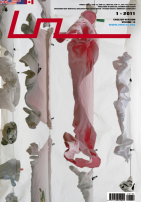






















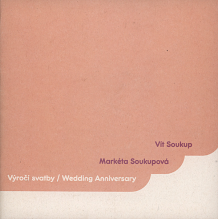




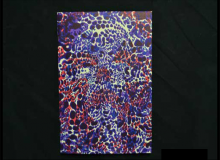
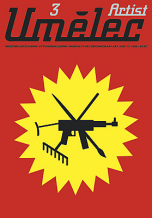
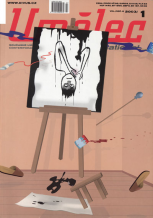
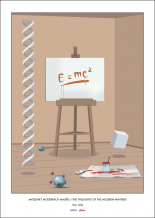


 New book by I.M.Jirous in English at our online bookshop.
New book by I.M.Jirous in English at our online bookshop.
Комментарии
Статья не была прокомментированаДобавить новый комментарий